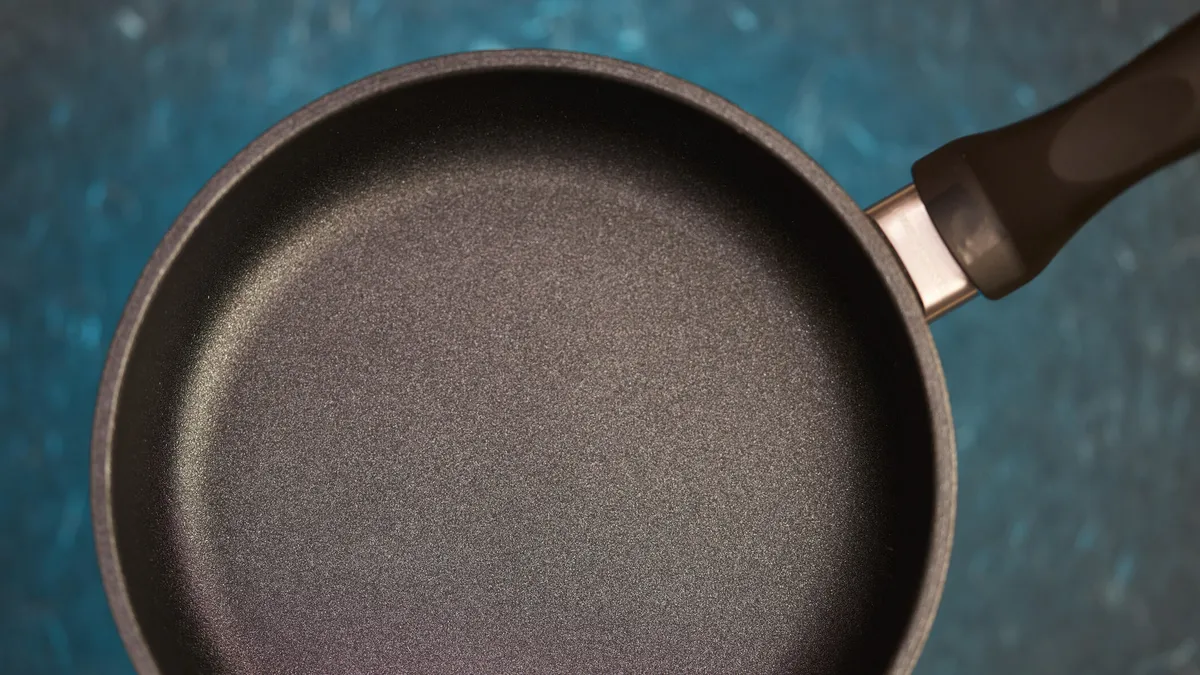
Nonstick cookware is great for some things, but treating it like a Swiss Army knife for cooking is a recipe for disaster. Nonstick pans have issues with proper browning and searing. Ask it to give your steak a crust, and it’ll respond with something sad and gray.
And here’s the kicker: Some foods are nonstick coating assassins. They’ll chip away at that slippery surface faster than you can say “not under warranty,” leaving you with chemical flakes in your scrambled eggs or stir-fry.
Sure, we all love easy cleanup, but most of your culinary creations beg for the tough love only stainless steel, carbon steel, or cast iron can provide. These pans don’t coddle your food; they give it character, depth, and true flavor development. I consulted an expert to compile the ultimate nonstick no-fly list — foods that should never let mingle with Teflon. Consider this your intervention before you commit any more culinary crimes.
Richard LaMarita is a chef-instructor of Health-Centered Culinary Arts at the Institute of Culinary Education in New York City. LaMarita describes nonstick cookware, including ceramic, as “niche” in a sense.
“Scrambled or fried eggs, pancakes, and fried tofu are great for cooking in nonstick pans,” LaMarita told me over email. “These sticky foods must come out completely without leaving remnants in the pan. Nonstick pans are popular, easy to clean, and convenient, and I recommend every cook have one.”
That said, they’re not designed to handle high heat, be placed in the oven, or scrubbed vigorously. The coating that makes a pan nonstick can deteriorate faster when confronted with certain foods or cooking techniques.
So, what foods should never be cooked in nonstick cookware? Here are five things Chef LaMarita warns against.
Don’t miss any of our unbiased tech content and lab-based reviews. Add CNET as a preferred Google source.
1. Most meat and fish
First are foods that require or desire searing on the outside. When you’re looking for a deep, caramelized crust with good color, such as on a steak, chicken breast, or a piece of salmon, you won’t get the color you want from a nonstick pan. Nonstick is not made to tolerate the high heat required to achieve the desired crust, and its surface is not geared toward developing that crust due to the coating on the pan.
2. Most vegetables
Much like meat, vegetables need a little char for maximum flavor, and you just won’t get it with a nonstick pan. For zucchini, carrots, onions, asparagus and bok choy, reach for a stainless-steel or cast-iron skillet for best results.
3. Caramelized food
Do you know about “frond?’ It’s the caramelized, crusty bits of food left on the pan after searing, and it’s the key to big flavor (and happiness). Fond is used to make pan sauces, searing items first, then picking up those beautiful, tasty bits of food and incorporating them into the sauce. For making frond, a nonstick pan will not serve you. There is simply not enough surface heat.
4. Highly acidic foods
Cooking highly acidic foods in nonstick pans is not a good idea. Acidic foods include a tomato sauce, or a dish with a high ratio of vinegar in the pan, such as a braised cabbage, or if there is lemon juice in the cooking process. “Ratatouille is one dish I wouldn’t cook in a nonstick,” LaMarita says. “The acids in this recipe and others will corrode the delicate nonstick surface over time.”
5. Stir-fry, soups, sauces
Along the same lines of wearing down the surface, refrain from cooking foods or dishes that require a fair amount of stirring. A stir-fry, sauce, or a dish that demands a lot of tossing and mixing could wear down the surface quickly. “I find that nonstick surfaces wear down eventually, even with proper use, so why speed up that process?”



